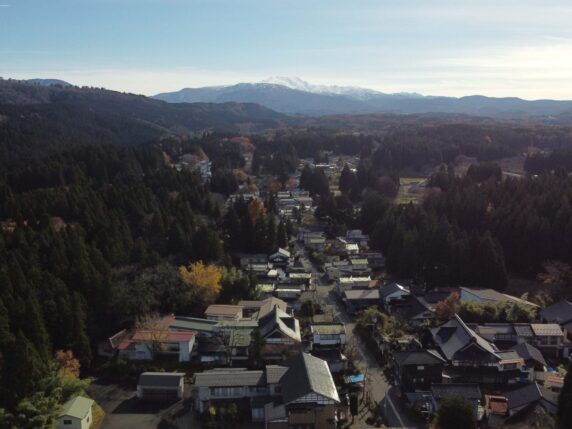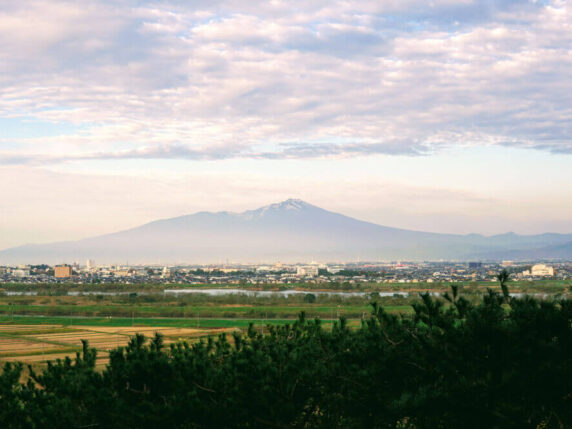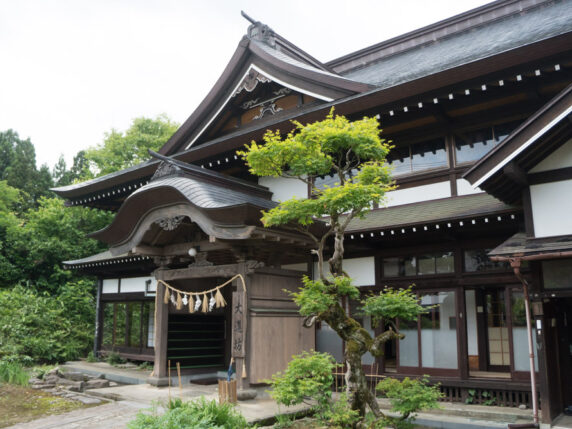Shukubo Pilgrim Lodges on Haguro-san
Written by Timothy Bunting
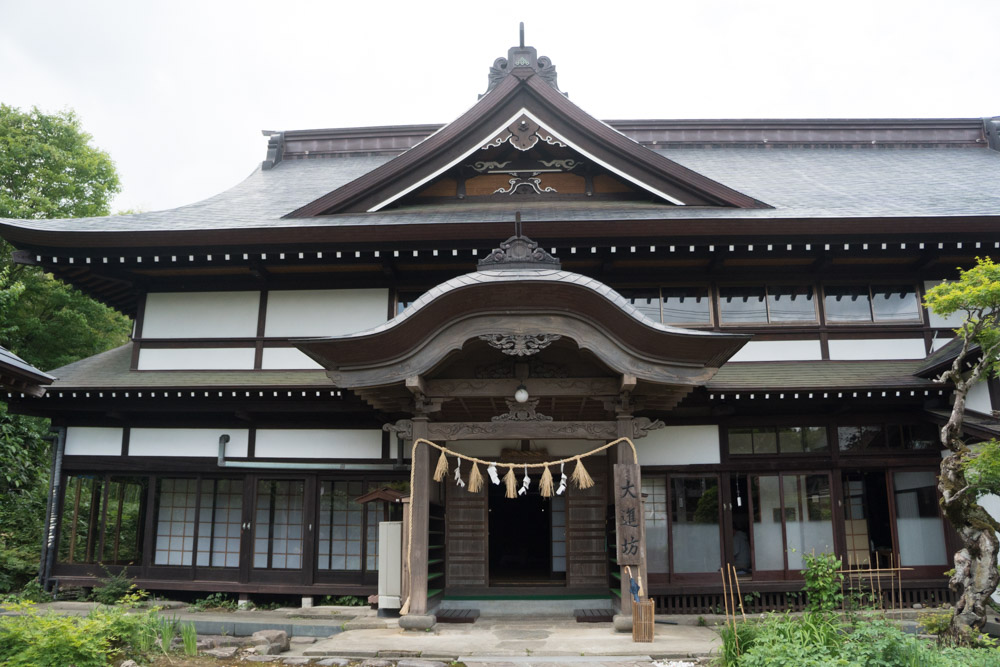
For the true Dewa Sanzan experience, for the true Japan experience, you can't go past the Shukubo Pilgrim Lodges of Haguro-san. Shukubo are purpose-built lodges established long ago for those making a pilgrimage on the Dewa Sanzan. Although some people think of this as a form of temple lodging, that is not quite correct. Let's take a look at the Shukubo Pilgrim Lodges of the Dewa Sanzan.
How did the Shukubo start?
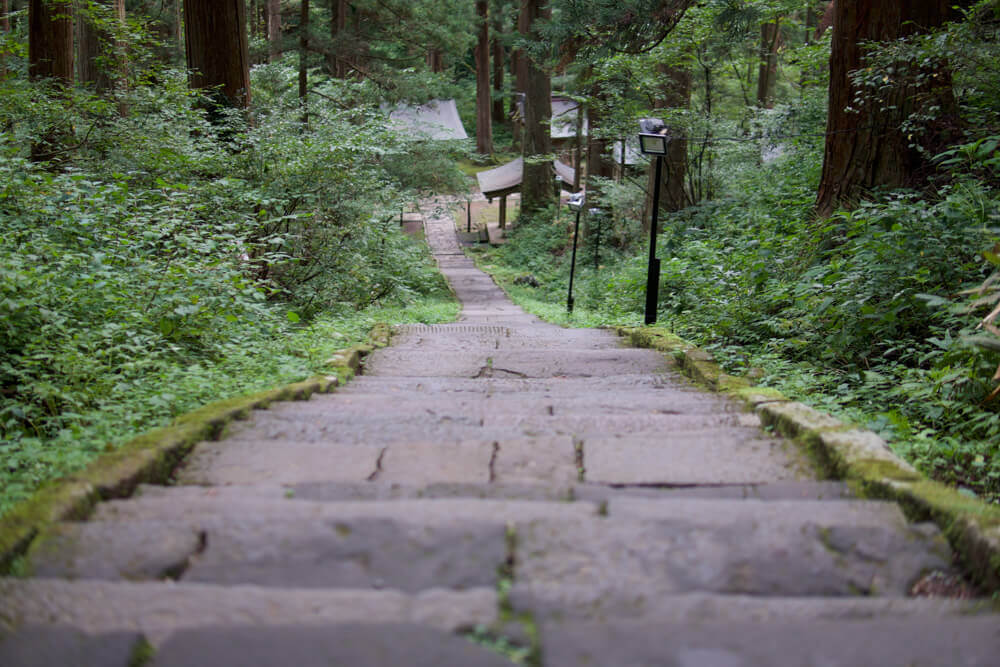
For centuries, pilgrims from all over Japan descended on the Dewa Sanzan in search of spiritual rebirth. Before long, this influx demanded accommodation. This lead to the establishment of the Shukubo pilgrim lodges in Toge, a small township on Haguro-san. However, it wasn’t until the 17th century when the main turning point for this quaint village came.
In the 1630s, the 50th chief priest of Haguro-san, Tenyu Betto, converted the mountain from Shingon to Tendai Buddhism. This move was likely politically motivated as the de facto rulers of Japan at the time, the Tokugawa Shogunate, were also stern followers of the Tendai sect. Naturally, what happened next was a large influx of funding from the Shogunate. This funding led to the construction of the stone stairway, a new temple at the top of Haguro-san, and of course the development of the Shukubo.
Each Shukubo is designated an area throughout Japan to play host to. This means that generations of the same family can revel in the family history they have developed there. The same Shukubo could have played host to your great-grandparents, in the same way it could play host to your great-grandchildren. In this way, Shukubo have retained a special piece of Japanese culture, and now we can all do the same.
The Rise and Fall of the Shukubo
As one of the main providers of accommodation on the Dewa Sanzan, things went really well for the Shukubo pilgrim lodges. Shukubo made up the majority of households in the Toge township of Mt. Haguro in the Edo period (1603-1868). At their peak, of the 400 households in Toge, 300 were Shukubo, and more than three million pilgrims visited the Dewa Sanzan annually.
However, slowly over time the dominance of the Shukubo has fallen dramatically; these days there are less than 30. What happened for the Shukubo to lose so much power? Arguably the biggest reason is demographics. Besides other options for accommodation on the Dewa Sanzan popping up in recent years, the ageing population and changing views on religion in Japan have led to visitor numbers to the Dewa Sanzan falling dramatically each year. In turn, this led to falling demand for accommodation on the Dewa Sanzan.
Also, the criteria for starting a Shukubo is very strict. Basically, Shukubo can only be passed down within the same family. So, to run a Shukubo, you need to either be born or married into one. In addition, starting a Shukubo requires blessings from the Shinto Shrines and Buddhist Temples around, which may be one reason why people confuse Shukubo with temple lodging. Fortunately, the rules of old that meant only monks and people with status being allowed to stay in Shukubo have gone, and these days anyone with the right manners and mindset is able to stay.
What exactly is a Shukubo?
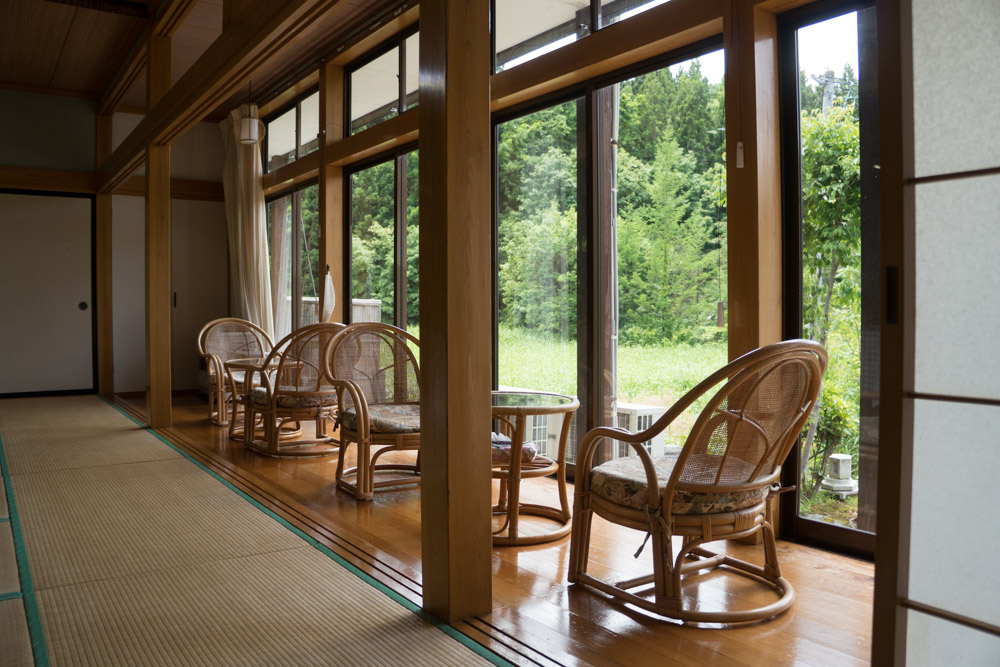
For accommodation on the Dewa Sanzan, go for the purpose-built option. Shukubo pilgrim lodges are not quite Buddhist temples, nor are they Shinto shrines. They are not quite traditional Ryokan Inns, nor are they a hotel. Staying in a Shukubo is more like staying in both a temple and a Ryokan at the same time.
Besides lodging, the main role of a Shukubo is simply to support pilgrims. From Sendatsu guides, to the Shiroshozoku white garments, and Shojin Ryori ascetic cuisine, Shukubo have everything you need for a spiritual rebirth on the Dewa Sanzan. Not only that, but for a Shukubo to be called a Shukubo, it must have an altar for worship. All Shukubo are run by Yamabushi, so they can bless you before and after your venture into the mountains.
Now onto the Ryokan part. The rooms in Shukubo are typically Japanese tatami-style. In other words, sleeping on a futon on the floor is the norm. For those who need extra support, some Shukubo do take requests for beds. Each room typically comes with modern amenities like a Yukata, Wi-Fi, or a TV for relaxation after a long hike. Speaking about relaxation, Shukubo also have public baths to ease your aches and pains. Bear in mind that some Shukubo may not have towels on hand. The village of Toge is also the provider of the two Matsuhijiri. Matsuhijiri are Yamabushi that take part in the 100-day Fuyunomine Ritual that concludes with the Shoreisai on New Years’ Eve.
Buildings That Breathe Life into the Town
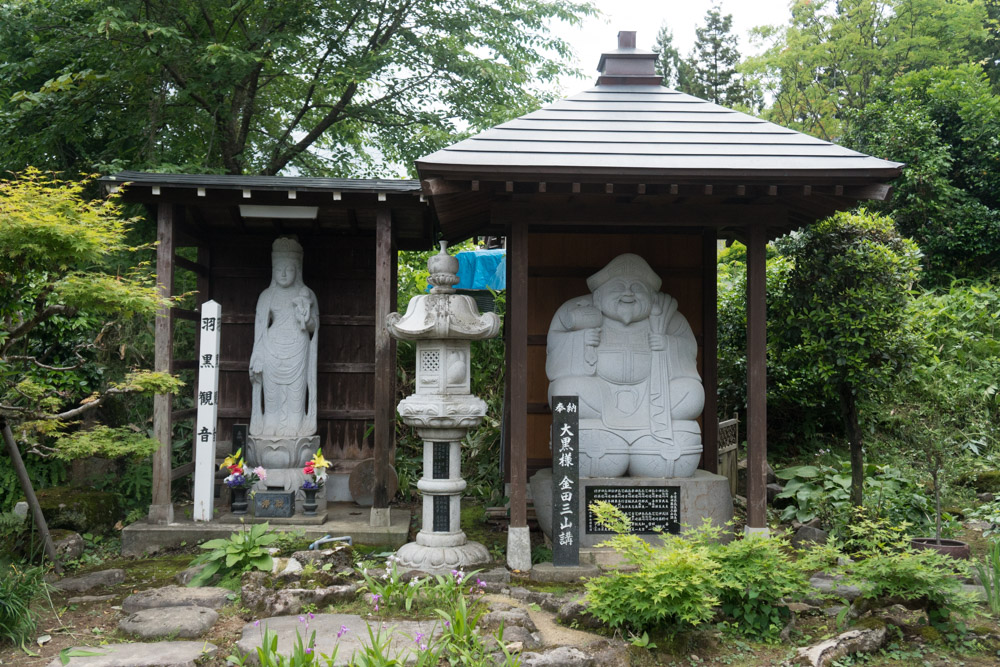
Take a walk down the row of pilgrim lodges and you might start to notice a few things. Daishobo. Daishinbo. Hashimotobo. Sankoin. Enmei'in. The characters 'bo' (坊)and 'in' (院)appear in the names of the Shukubo. In fact, to be considered a Shukubo, they have to. Traditionally, the ‘in’ character designated a higher status, such as a place that only monks could stay in. These days, there is not much difference between them.
Shukubo were originally made during the syncretism of Buddhism and Shintoism in Japan, so they have accepted people of both religions since their inception. All Shukubo have their own Torii gates. Torii gates designate a sacred location. As Shukubo are the spiritual location of rebirth, they are deemed sacred. Shukubo that still have Shimenawa, rope with white lightening-like pieces of paper dangling down, are currently in business. Torii gates and Shimenawa are both Shinto, but many of the Shukubo feature Buddhist statues and other artefacts.
Thatched Roofs and Giant Bugs
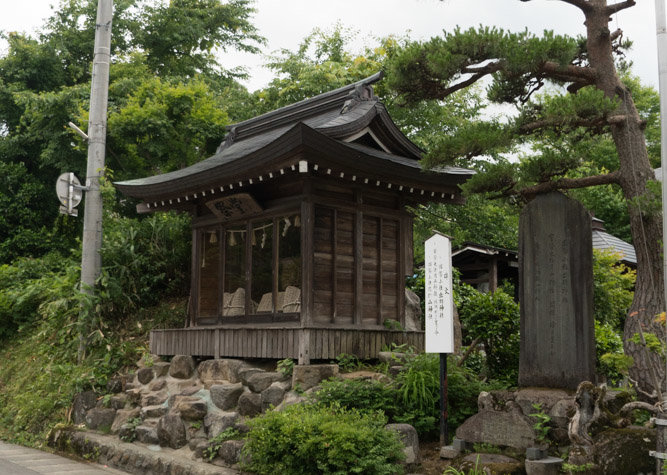
Many of the accommodation options on the Dewa Sanzan date back to the 1600s and incorporate design features of that time. In the olden days thatched roofs, like that of Sanjingosaiden at the top of Haguro-san were very much commonplace. However, they require a lot of periodical maintenance, and some Shukubo have opted to replace their roofs with tiles or steel instead.
Not only the Shukubo, but most of the buildings in Toge have a giant rope decorated in front. This rope is also used as protection, and is from the Shoreisai festival at the top of Mt. Haguro on New Years’ Eve. These ropes are originally a ‘Tsutsugamushi’ , a giant bug that represents a demon that is destroyed during the festival. These ropes are called “Hikinawa”, and the ends must face the Gassan, which is why face opposite directions on each side of the road. Take a walk down the row of pilgrim lodges, and take in the atmosphere of the buildings for a true Dewa Sanzan experience.
The Location: An Excellent Base for Exploring the Dewa Sanzan
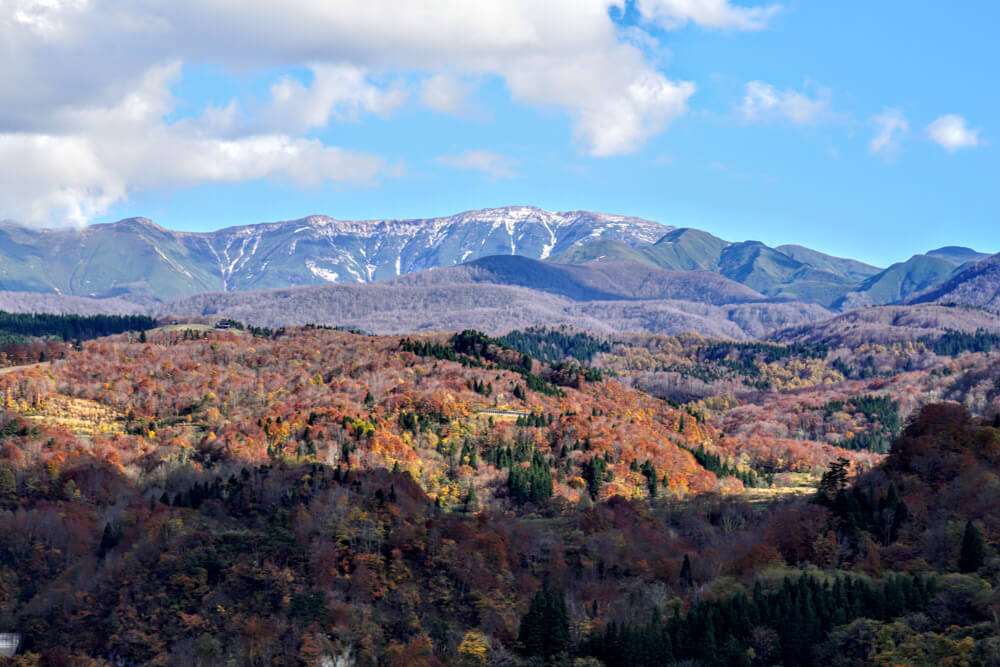
What do you normally prioritise when you look for places to stay? Cost? The view? Convenience? For Dewa Sanzan accommodation, Shukubo score reasonably well on the first two, but cannot be beaten in terms of location. Staying in a Shukubo puts you in the absolute best location for hiking all three of the Dewa Sanzan. As you're already staying on Mt. Haguro, the Five Story Pagoda is easy to reach. Sanjingosaiden, or Dewa Sanzan Shrine, at the top is also walkable providing access to the Flower Festival and Hassaku Festival. The Shukubo also put you in a great location for checking out the autumn leaves of the Dewa Sanzan.
For those using public transport, simply take the bus up to Mt. Gassan and hike to the top. Then, hike down via Mt. Yudono, where there’s another bus back to Mt. Haguro. Have your own transport? The drive up to Gassan Hachigome (8th station) and Yudono-san both take about one hour. Bear in mind that these are two completely different directions, so it may be easier to take the bus.
In addition, the Shukubo are primarily located along a road adjacent to the Zuishinmon gates and the Five Story Pagoda. This road leads up to Haguro-san from central Tsuruoka, and was formerly the main path up to the shrine. Basing yourself in a Shukubo makes it very easy to visit the Five Story Pagoda or the stone stairway. Visiting in the warmer months? Check out the Five Story Pagoda Light Up. Or, take a walk amongst the dimly lit lanterns and fireflies at night during Obon. While you’re there, be sure to also check out the Ideha Cultural Memorial Museum for all things Dewa Sanzan. You’re also only a short walk from Koganedo temple, where the three original Buddha of Haguro are venerated and more.
Dewa Sanzan Shojin Ryori

What good would your accommodation on the Dewa Sanzan be without excellent food to follow up? Well, the Shukubo are arguably the best place to try Dewa Sanzan Shojin Ryori (Ascetic Cuisine). Not only have they been providing the meals since the Shukubo’s induction, but the recipes have been passed down through the generations. This means that each Shukubo has its own original family recipes that can only be had there.
Each Shukubo has its own take on famous dishes, the most famous of which is Goma Dofu Sesame Tofu, which is a sesame paste that is hardened to look like Tofu. As the ingredients are mostly taken directly from the mountains, the meals are mainly vegan, although some places use fish stock in the soup, and some even provide ‘Yamabushi pork’ or other meats. This is because for the most part the Shukubo are not Buddhist.
The Dedication to Worship
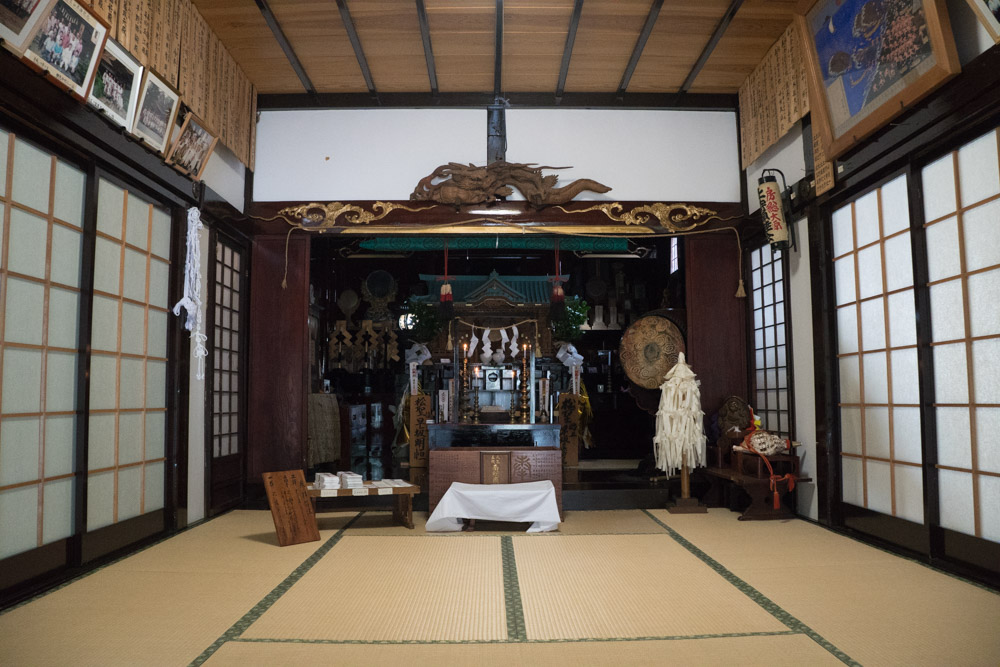
If you want a truly unique Japan experience, staying in a Shukubo is one way to get it. What truly sets Shukubo apart from other accommodation on the Dewa Sanzan is the dedication to worship. The Yamabushi use the Shinto shrines and Buddhist altars each day for their morning rituals. Each Shukubo invites everyone staying to take part regardless of religion. Depending on the Shukubo, the prayers can be a mixture of Buddhist, Shinto, and Haguro Shugendo, a religion native to the Dewa Sanzan. Haguro Shugendo is based on the worship and appreciation of nature, that leads to an appreciation of life itself.
The Yamabushi dedicate the prayers to many things. For example, safety in the home, safety in travel, the health of the worshippers, or success in business. The Yamabushi can also organise Haguro Shugendo-style meditation sessions, called Chinkon, and can bless you before you depart on your journey into the mountains.
Shukubo are your home away from home on the Dewa Sanzan. When you stay in a Shukubo, the hosts welcome you into their family. Each Shukubo plays host to pilgrims from a different part of Japan. Each year, groups of people from all over Japan make the pilgrimage to the Dewa Sanzan. The Shukubo play host to these groups, called Kochu, going so far as to providing them with a Sendatsu guide to take them on a pilgrimage.
Staying in a Shukubo Pilgrim Lodge
Daishinbo has been run by the Hayasaka family for over 350 years. The building incorporates posts and pillars from a former temple at the top. of Haguro. Daishinbo also used to be one of only two places to provide Matsuhijiri Yamabushi to the annual Fuyunomine Winter Peak Ritual.
Saikan at the top of Haguro-san also provides the same services as the Shukubo, but is run by Dewa Sanzan Shrine, not privately. Saikan is an excellent location to try Dewa Sanzan Shojin Ryori (Ascetic Cuisine).
For accommodation on the Dewa Sanzan, although you would expect the Shukubo to be open to all types of people, some of the Shukubo only operate at certain times of the year. Also, some of the Shukubo only cater to certain guests, such as large groups or those on Kochu pilgrimages. However, there are a few Shukubo that are very open to having international guests. These include Daishobo, Daishinbo, Sankoin, Hashimotobo, and although not strictly a Shukubo, Saikan at the top of Mt. Haguro.
Read More: Saikan Mt. Haguro Temple Lodging
Climbing the Dewa Sanzan from the Shukubo

For experienced hikers, we recommend climbing Haguro-san by itself, then doing Gassan and Yudono-san on the same day. Take the bus to the eighth station on Mt. Gassan, climb to the top, then come down Yudono and take the bus back to Haguro. The easiest way to climb all three is to climb Mt. Haguro separately then do Mt. Gassan and Mt. Yudono at the same time. Setting up base at a Shukubo pilgrim lodge on Mt. Haguro is a good way to go. Remember Mt. Yudono is only open from the beginning of May until the end of October, and Mt. Gassan from July until mid-October.
Read More: Hike the Dewa Sanzan
Getting to the Shukubo Village
For public transport to your accommodation on the Dewa Sanzan, there is a bus from Tsuruoka Station to Mt. Haguro. The best stops for the Shukubo are Sakura Koji or Zuishinmon. Busses also go to the top of Mt. Haguro, to Mt. Gassan 8th Station, and to Mt. Yudono. See here for a bus timetable, or see our guide on how to access the Dewa Sanzan.
Prices
The price for staying in a Shukubo is around ¥11,000 per night and normally includes dinner and breakfast the next day. It's also possible to stay without meals, and you can order rice balls for lunch if you like. This is quite reasonable in comparison to other accommodation options near the Dewa Sanzan.
Conclusion

So there you have it. If you're looking for accommodation options on the Dewa Sanzan, look no further than the Shukubo. Not only are they purposely built for visitors, they are places full of history that offer unique Japan experiences to those who choose to stay there.
Timothy Bunting
Tim Bunting is a Dewa Sanzan Shrine Yamabushi with over 10 years' experience living beneath the three mystical peaks. He is a self-professed Dewa Sanzan nerd, and is currently working on the Yamabushido project and Dewa Sanzan Monzenmachi Project with Megurun Inc. His roles including assisting in Yamabushi trainings, translating, interpreting, and curating Dewasanzan.com.
Insider information and updates on
The Dewa Sanzan.
Subscribe to the Dewa Sanzan Tribe now.

